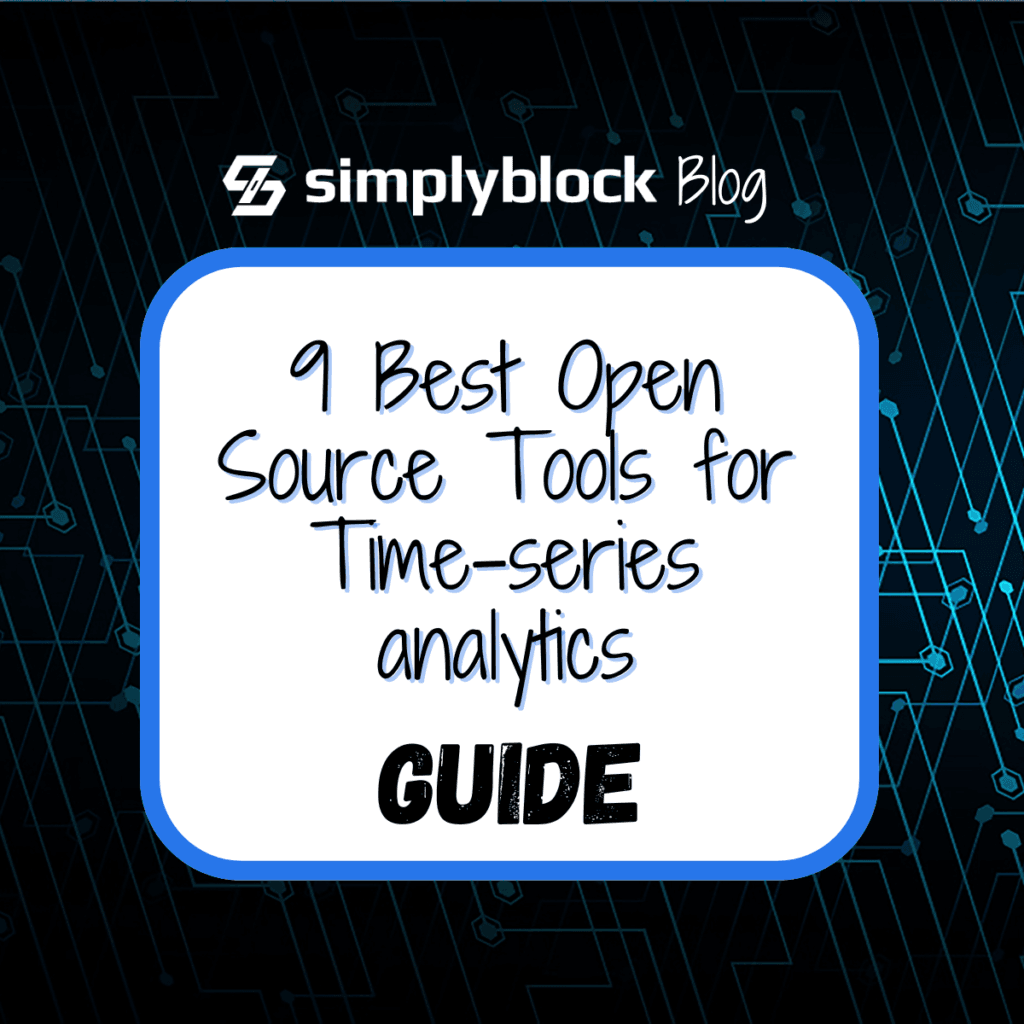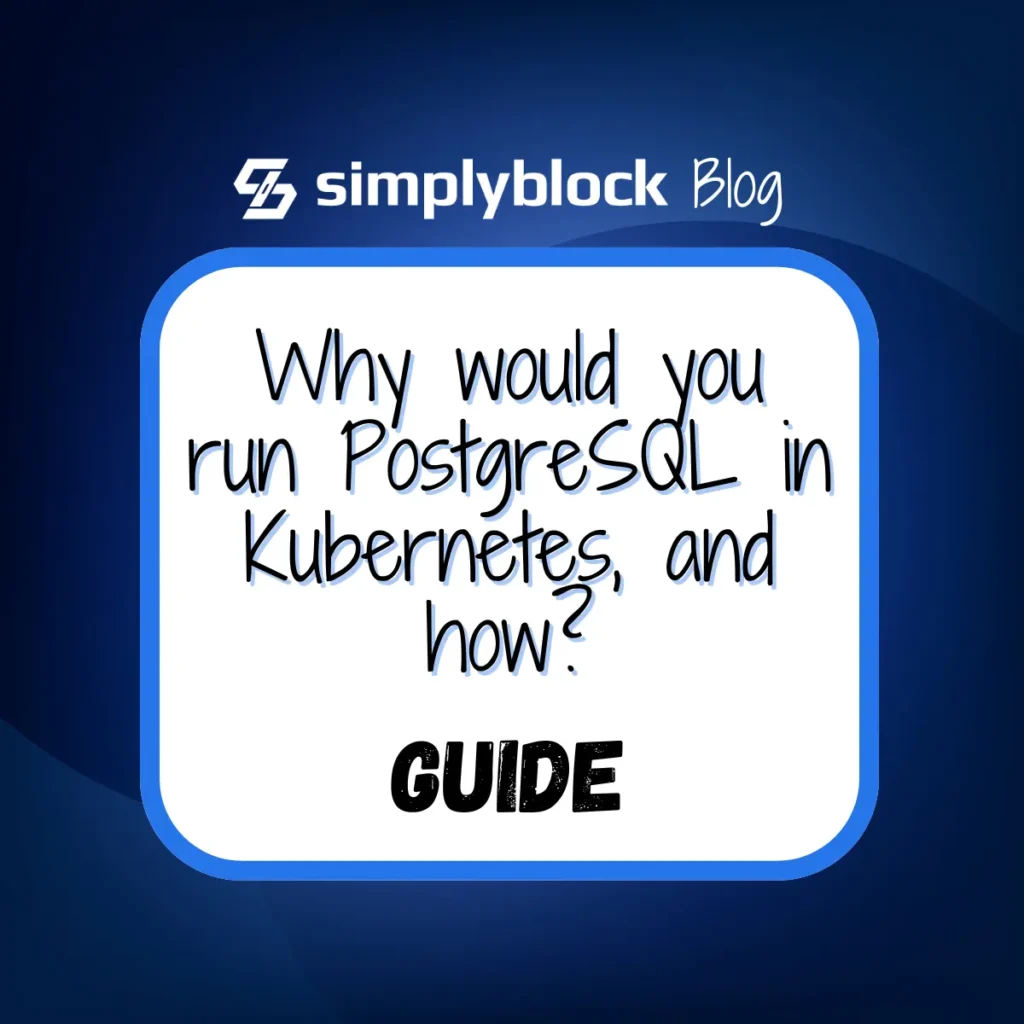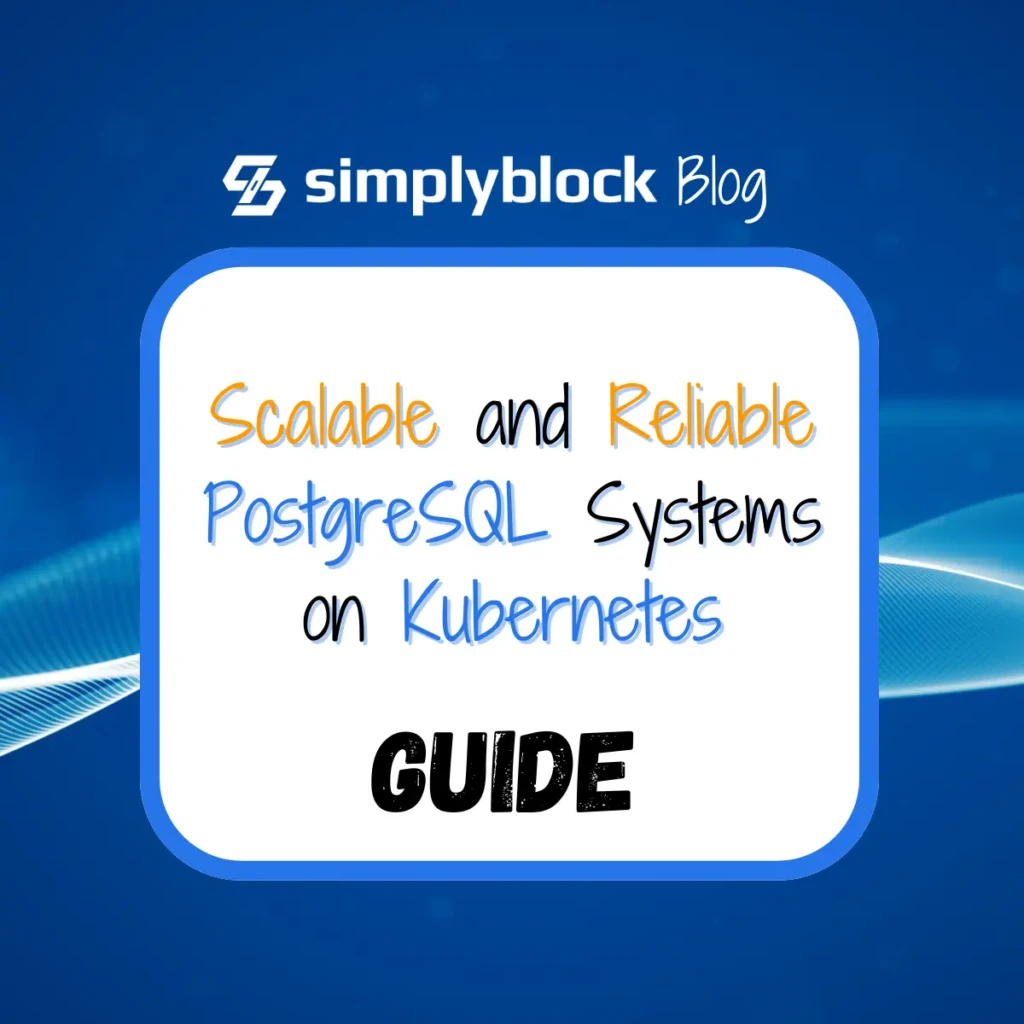
Introduction:
This interview is part of the simplyblock Cloud Frontier Podcast, available on Youtube , Spotify , iTunes/Apple Podcasts , and our show site .
In this episode of simplyblock’s Cloud Commute podcast, Chris Engelbert hosts Mike Freedman, co-founder and CTO of Timescale, to explore how TimescaleDB extends PostgreSQL for time-series data. Mike delves into how TimescaleDB optimizes Postgres for high-ingestion workloads, real-time analytics, and event-driven applications. Whether you’re handling IoT data or large-scale event logging, this episode offers valuable insights into the capabilities of TimescaleDB for modern data management.
Key Takeaways
What is TimescaleDB, and how does it Extend Postgres for Time-series Data?
TimescaleDB is an open-source time-series database that builds on PostgreSQL, offering powerful capabilities for managing time-series data, event data, and real-time analytics. Unlike traditional Postgres tables, TimescaleDB introduces hyper tables that optimize data storage and querying for time-series data, while maintaining full SQL compatibility. This allows developers to work within the familiar Postgres environment while gaining access to features like automated partitioning, compression, and scaling for time-series workloads.
How does TimescaleDB Handle Time-series Data Storage and Performance Scaling?
TimescaleDB automates data partitioning using hyper tables, breaking time-series data into chunks based on time intervals. It also offers compression, transforming data from row-based to columnar format to reduce storage costs while optimizing query performance. For even more efficiency, TimescaleDB employs tiered storage, shifting older data to slower, cheaper storage without sacrificing accessibility. This architecture allows TimescaleDB to handle massive amounts of time-series data while maintaining high performance for both recent and historical data queries.
What are the Key Benefits of using TimescaleDB for Real-time Analytics?
TimescaleDB excels at real-time analytics, enabling fast data ingestion and high-performance querying over large datasets. With features like automated partitioning, compression, and tiered storage, TimescaleDB can efficiently process real-time data, making it ideal for applications in IoT, financial services, and infrastructure monitoring, where quick insights are critical. Its ability to scale seamlessly as data grows also ensures that businesses can continue to derive value from their data without hitting performance bottlenecks.

In addition to highlighting the key takeaways, it’s essential to provide deeper context and insights that enrich the listener’s understanding of the episode. By offering this added layer of information, we ensure that when you tune in, you’ll have a clearer grasp of the nuances behind the discussion. This approach enhances your engagement with the content and helps shed light on the reasoning and perspective behind the thoughtful questions posed by our host, Chris Engelbert. Ultimately, this allows for a more immersive and insightful listening experience.
Key Learnings
What is Time-series Data, and how can it be used in Applications?
Time-series data refers to data points collected or recorded at successive points in time, often used to track trends, monitor systems, or log events. Applications for time-series data range from IoT devices recording sensor readings, to financial systems tracking stock prices, to IT infrastructure logging performance metrics. Time-series data allows organizations to analyze patterns and trends over time, making it crucial for real-time analytics and forecasting.
Simplyblock Insight:
Handling time-series data effectively requires an infrastructure capable of ingesting, processing, and storing vast amounts of data. Simplyblock’s cloud storage platform is designed to manage these demands, offering high-throughput storage access for data pipelines that scale with your needs. By leveraging simplyblock, businesses can ensure their time-series applications run smoothly, even as data volumes grow.
What are the best Practices for Managing Large-scale Time-series Data in Postgres?
Managing large-scale time-series data in Postgres involves techniques such as partitioning, indexing, and using efficient data types. Partitioning data based on time intervals can significantly speed up queries, while indexing frequently queried columns improves performance. Additionally, compressing old data helps to reduce storage costs without affecting query performance.
Simplyblock Insight:
When dealing with large datasets, performance optimization is key. Simplyblock’s storage solutions provide the scalability needed to manage large time-series databases while ensuring low-latency access to frequently queried data. With automated scaling and cost-efficient storage, simplyblock makes it easier to implement best practices for managing time-series data in Postgres.
How can Developers Build Real-time APIs using Postgres and Time-series Data?
Developers can build real-time APIs using Postgres by leveraging time-series databases like TimescaleDB, which are optimized for handling high-ingestion workloads. With Postgres’ powerful querying capabilities and TimescaleDB’s optimizations for time-series data, developers can create APIs that deliver real-time insights by querying the most recent data and providing up-to-the-minute results to users.
Simplyblock Insight:
Building real-time APIs requires an infrastructure capable of handling continuous data ingestion and rapid query execution. Simplyblock’s high-performance storage resources ensure that APIs can deliver real-time results, even when handling massive amounts of time-series data. With simplyblock, developers can scale their API services seamlessly, ensuring reliable performance under heavy workloads.
What are the use Cases for Time-series Data in IoT, Finance, and Analytics?
In IoT, time-series data is used to monitor and control devices, track sensor readings, and optimize system performance. In finance, it powers real-time trading systems, risk management, and fraud detection by analyzing stock prices, market trends, and transaction logs. Time-series data also plays a key role in analytics, helping organizations visualize trends, monitor KPIs, and predict future outcomes.
Simplyblock Insight:
IoT and financial applications demand both high data ingestion rates and near-instantaneous analysis. Simplyblock’s cloud storage solution is designed to handle the unique challenges of these industries, providing scalable storage and fast access to real-time data. With simplyblock, businesses can ensure that their IoT and financial analytics applications perform optimally, delivering timely insights and actions.
Additional Nugget of Information
What are the Key Benefits of Real-time Analytics for Data-driven Industries?
Real-time analytics enables organizations to make immediate, data-driven decisions by processing and analyzing data as it’s ingested. This is particularly valuable in industries like finance, healthcare, and logistics, where instant access to insights can improve operational efficiency, reduce risks, and enhance customer experiences. By monitoring data in real-time, businesses can identify trends, detect anomalies, and respond to critical events as they happen.
Conclusion
TimescaleDB brings the power of PostgreSQL to time-series data, making it an excellent choice for applications that require real-time analytics and event data management. Its features, such as hyper tables, automated partitioning, and compression, make it easy to handle high-ingestion workloads and large datasets while maintaining fast query performance.
Simplyblock’s cloud infrastructure provides the ideal environment for scaling TimescaleDB applications, offering elastic storage, high-throughput data processing, and reliable performance. Whether you’re working with IoT data, financial transactions, or monitoring real-time analytics, simplyblock ensures your applications can scale seamlessly as data grows, delivering the performance and cost-efficiency you need.
For more insights on cloud-native databases and the future of data-driven applications, be sure to tune in to future episodes of the Cloud Commute podcast!
Topics
Share blog post
Tags
Event-Driven Architectures, High-Ingestion Workloads, PostgreSQL, Real-Time Analytics, Time-Series DataYou may also like:

9 Best Open Source Tools for Time-Series Analytics and Predictions

Why would you run PostgreSQL in Kubernetes, and how?

How to Build Scalable and Reliable PostgreSQL Systems on Kubernetes
